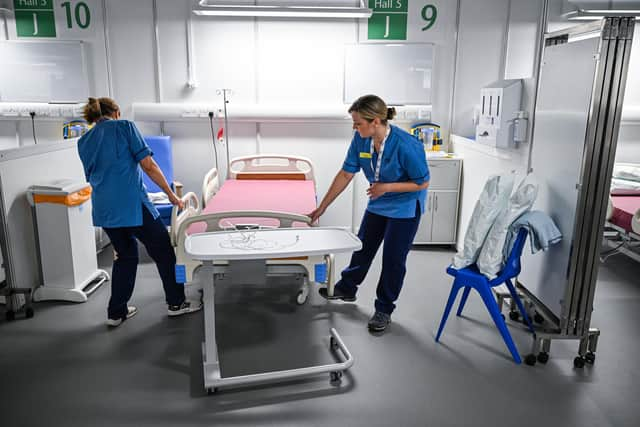A&E waiting times are more than ever-worsening numbers - Elsa Maishman
Figures for the previous week are published by Public Health Scotland (PHS) every Tuesday, and will likely be published online again today and in tomorrow’s paper.
On August 8 they hit a record – the lowest percentage of people seen and admitted, transferred or discharged within four hours since PHS began publishing in this format in early 2015.
Advertisement
Hide AdAdvertisement
Hide AdThis was 76.5 per cent, while the Scottish Government target is 95.


Since then, a new record low has been reported seven times in 11 weeks, including dropping below 70 per cent for the first time last week.
These figures are still repetitive. It’s easy to get lost in the weekly cycle of a slightly diminishing percentage, record-breaking low upon record-breaking low, and endless condemnation from opposition politicians.
But the Royal College of Emergency Medicine Scotland (RCEM) estimates 231 Scots have died as a direct result of long waits at A&E since the start of this year.
And while Nicola Sturgeon has yet to accept that number, she has acknowledged that extended waiting times do put patients at risk.
As well as the direct harm to patients caused by long waits, Dr John Thomson, vice-president of the RCEM, points out the numbers are a “barometer” for the rest of the NHS and social care system.
While A&E departments are themselves very busy, if patients are waiting a long time it’s usually because of backlogs elsewhere.
Whatever area of the hospital they should be instead may be over-full, often because patients can’t be discharged to care in the community instead.
Advertisement
Hide AdAdvertisement
Hide AdAnd the figures will also give an idea of ambulance waiting times, as when ambulances are delayed it is often because they are stuck outside clogged up A&E departments waiting to offload patients.
A&E waiting time figures are easy to grasp, easy to report on, and like many such targets and metrics they can never show the true picture.
But they are one key indication, among many others, of how the NHS as a whole is coping – or struggling, as it is at the moment.
A message from the Editor:
Thank you for reading this article. We're more reliant on your support than ever as the shift in consumer habits brought about by coronavirus impacts our advertisers.
If you haven't already, please consider supporting our trusted, fact-checked journalism by taking out a digital subscription.
Comments
Want to join the conversation? Please or to comment on this article.